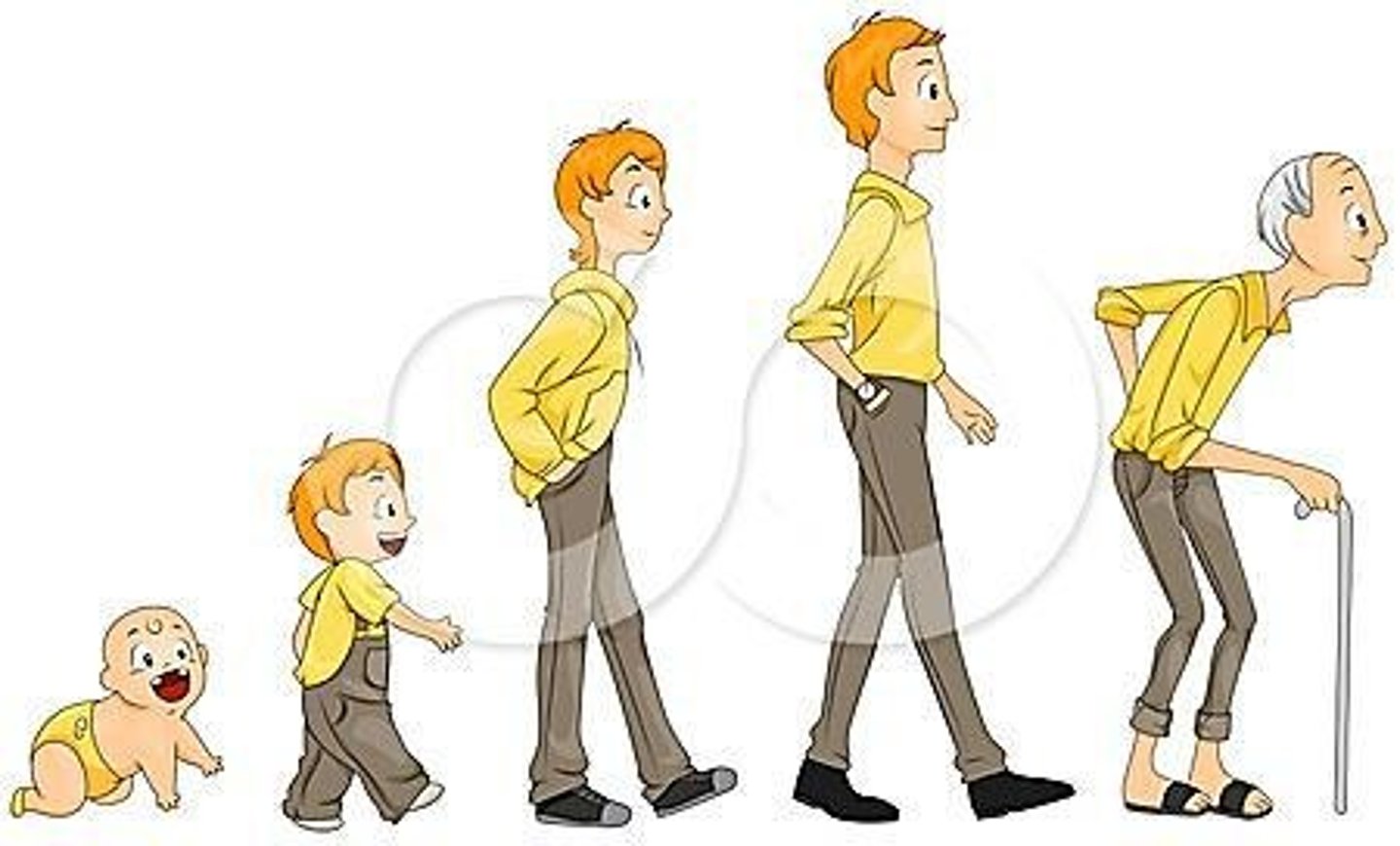HHII Theory: Middle Aged Adult
1/23
There's no tags or description
Looks like no tags are added yet.
Name | Mastery | Learn | Test | Matching | Spaced |
|---|
No study sessions yet.
24 Terms
What age range defines middle adulthood?
35 to 65 years of age.

What significant physical changes occur during middle adulthood?
Thinning, grey hair, increased weight, balding, coarse facial features, decreased skin moisture, loss of subcutaneous fat, and changes in body contour.
What is climacteric in the context of middle adulthood?
A period of decreased reproductive capacity in men and women, usually coinciding with menopause.
What are some common health concerns for middle-aged adults?
Stress, anxiety, depression, and adjustments related to physiological and psychosocial changes.
What cognitive changes are typical in middle adulthood?
Changes are rare, but there may be a decrease in reaction time and cognitive flexibility.
What is presbyopia and how does it affect middle-aged adults?
Presbyopia is the loss of elasticity in the lens, leading to difficulty focusing on close objects.
What are some common visual impairments associated with aging?
Decreased peripheral vision, glaucoma, cataracts, macular degeneration, and presbycusis (gradual loss of hearing).
What is Erikson's psychosocial stage for middle adulthood?
Generativity versus stagnation/self-absorption.
What does generativity involve according to Erikson?
The desire to care for others and create a positive change that benefits others, often through parenting or community involvement.
What are the implications of a midlife crisis?
It can involve reassessment, turmoil, and change, marking a time of potential spiritual crisis.
What role do nurses play in the health of middle-aged adults?
Nurses focus on stress-related illnesses, health promotion, lifestyle changes, and supporting positive health habits.
What are the psychological effects of menopause in women?
Menopause can lead to anxiety and depression related to physiological changes.
What are the challenges faced by middle-aged adults?
Adjusting to physical decline, facing mortality, navigating family transitions, and possible loss of power and control.
What is the sandwich generation?
Adults who are simultaneously caring for their aging parents and their own children.
What physiological changes are associated with aging in middle adulthood?
Decreased cardiac output, muscle tone, metabolism, and increased risk of conditions like osteoporosis and arthritis.
What are the effects of decreased bone density in middle adulthood?
Increased risk of kyphosis, degenerative joint disease, osteoporosis, and osteopenia.
What is the typical age range for menopause?
Menopause typically occurs between 45 and 55 years.
What are some lifestyle changes that can promote health in middle adulthood?
Forming positive health habits, participating in health promotion programs, and adapting to supportive environments.
What is the significance of significant life events during middle adulthood?
Events like work and parenthood prompt critical self-review and life assessment.
What is the relationship between physical changes and mental health in middle adulthood?
Physical changes can lead to increased stress, anxiety, and depression.
How does the aging process affect metabolism in middle adulthood?
There is a decrease in metabolism, which can lead to weight gain and decreased energy levels.
What is the impact of cognitive-perceptual decline in middle adulthood?
It can affect daily functioning and the ability to adapt to new situations.
What are some common emotional responses to the changes of middle adulthood?
Feelings of anxiety, depression, and a sense of loss regarding youth and vitality.
What is the importance of health promotion in middle adulthood?
It helps individuals take responsibility for their health and adapt positive health habits.